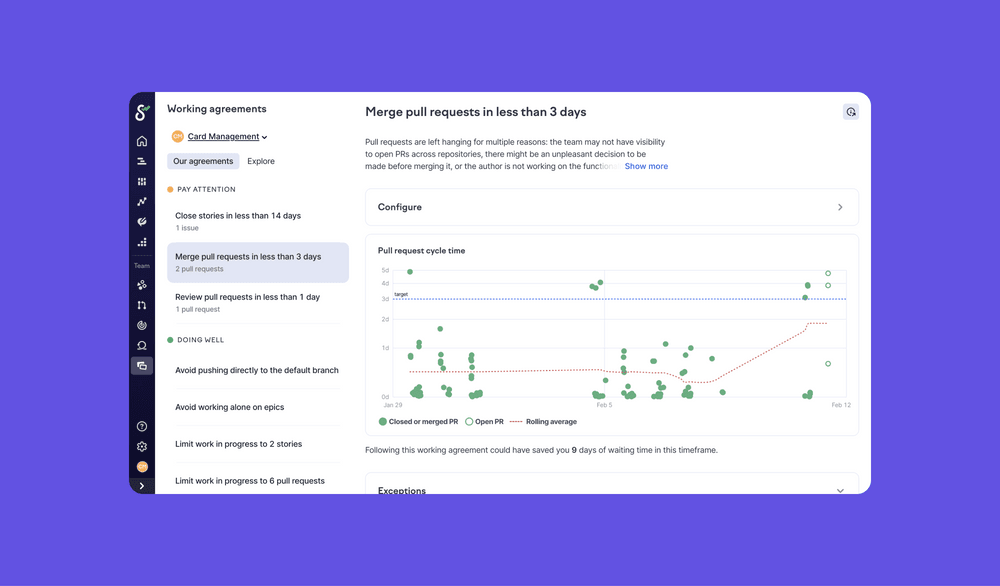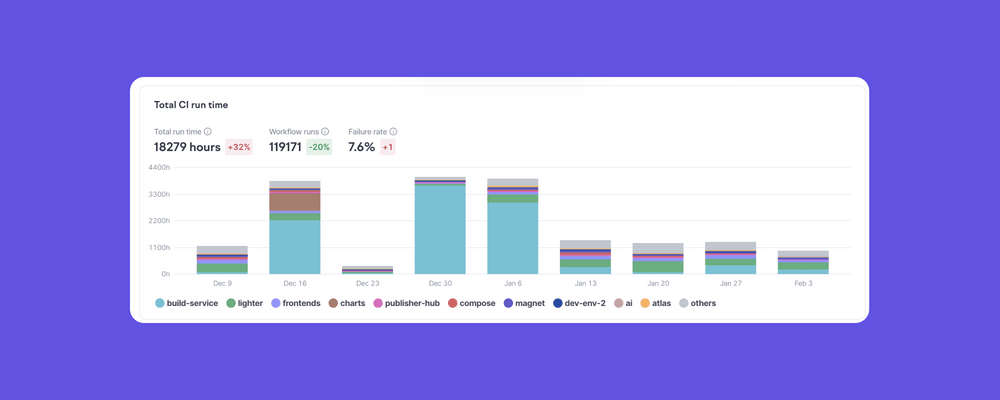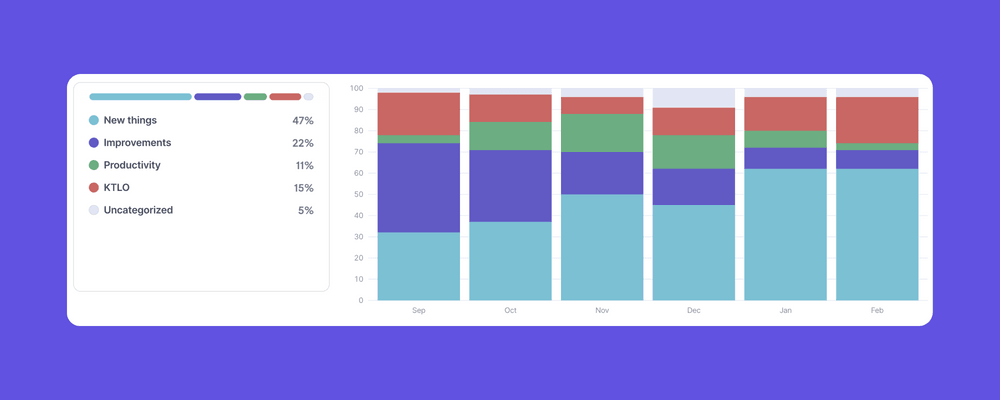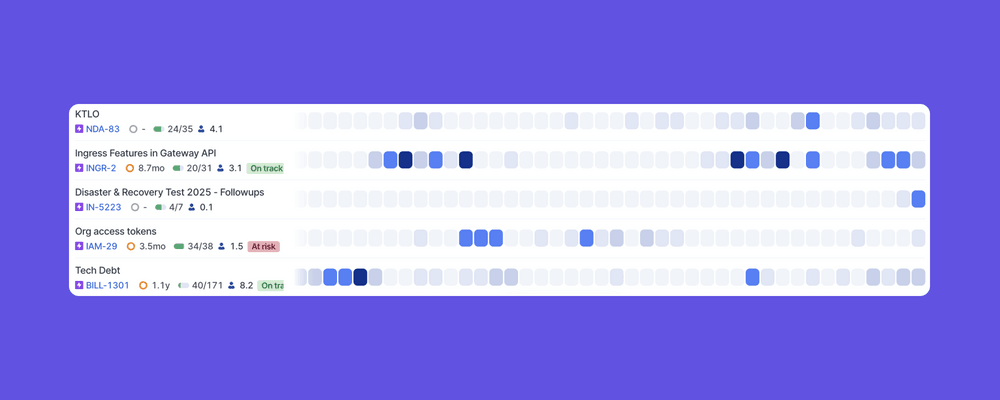
Improving developer productivity: Different levers at different levels

When software organizations start thinking about developer productivity, they often focus on individuals and teams — examining their processes, tooling, and ways of working. While team-level improvements are important, meaningful and sustainable productivity gains require pulling levers at multiple levels of the organization.
Let’s look at the levers available at different levels of the organization, and discuss why and how to escalate when needed.
Individual contributor levers
Individual engineers can meaningfully impact their own productivity and that of their teammates through thoughtful actions and habits. Individual contributors often have significant autonomy in how they structure their work, manage their time, and collaborate with others.
Engineers can optimize their personal workflow by establishing focused work periods, being intentional about how they handle interruptions, and developing expertise with their tools and development environment. They can improve team productivity by writing clear documentation, providing thorough code reviews, and sharing knowledge about parts of the system they understand well.
However, individual optimizations face clear limitations. An engineer working more efficiently in isolation cannot overcome systemic issues like unclear requirements, unstable priorities, or slow deployment pipelines. When individual contributors encounter these broader challenges, they should document the impact and advocate for improvements at the appropriate organizational level.
The most effective individual contributors recognize when to focus on personal improvements versus when to raise issues that require team or organizational intervention. They understand that while personal productivity matters, sustainable improvements usually require changes at higher levels of the organization.
Team levers
The team level is where the actual work of software development happens, and there are several powerful levers teams can pull to improve their productivity. Teams can implement work in progress limits to reduce context switching and improve focus. They can break down work into smaller batches for faster feedback cycles. They can automate repetitive tasks that slow them down. And sometimes, the most impactful change starts with a candid chat about what’s working and what’s not.
Team-level solutions work best for challenges that are contained within a single team’s sphere of control. If the team can implement a solution without needing significant coordination with other teams or changes to shared infrastructure, it’s likely a team-level problem. For example, if a team’s code reviews are taking too long, they can establish working agreements about review timing and implement processes to ensure reviews don’t become a bottleneck.

However, teams can only optimize within the constraints they’re given. If they’re constantly waiting on other teams, struggling with poor tooling, or dealing with unclear priorities, their local optimizations will have limited impact.
Organization levers
At the engineering organization level, directors and senior managers have access to different levers that can drive productivity. Organization-level solutions become necessary when a challenge affects multiple teams or requires coordination across team boundaries. If you see multiple teams struggling with the same issue, or if solving the problem for one team would create benefits for others, it’s likely an organizational challenge.
Organizations can standardize development processes across teams to reduce cognitive load, implement shared tooling that makes the development experience more consistent, and establish working agreements about how teams collaborate to prevent bottlenecks. The organization level is also where you can invest in platform teams to solve common problems once rather than having each product team solve them independently. For instance, if several teams are building their own CI pipelines with similar requirements, that’s a signal that the organization should invest in a standardized deployment solution.

Company levers
At the company level, leadership must create the conditions that promote productivity. Company-level solutions are needed for structural issues that affect the entire engineering organization and problems that require significant investment in headcount or infrastructure.

This starts with organizational design — making intentional decisions about team structure and ownership boundaries that minimize dependencies between teams and enable autonomous delivery. Company leadership must also commit to long-term investment in engineering effectiveness through budget and headcount allocation for platform teams and tooling improvements. Perhaps most importantly, company leadership needs to provide clear, stable priorities — when priorities constantly shift or too many initiatives are designated as “top priority,” teams struggle to maintain focus and delivery suffers.
Recognizing and escalating issues
Some clear signals that an issue requires organizational or company-level intervention include:
- When your team has optimized its processes but still encounters the same bottlenecks, the root cause likely lies outside the team. For example, if your team has automated everything it can but still spends 40% of its time on keeping the lights on, that’s probably a sign that the team owns too much surface area — an organizational design issue that needs to be addressed at a higher level.
- When multiple teams are building similar solutions to the same problem, that’s a strong signal that the organization should invest in a shared solution. If three teams are all writing their own tools to debug production issues, that effort would be better spent on a single, well-supported solution at the organizational level.
- When your team’s productivity is consistently impacted by factors outside its control — frequent priority changes, unexpected work from other teams, or reliability issues in shared infrastructure — these are symptoms of structural problems that need company-level attention.

When raising these issues with leadership, focus on the business impact rather than the technical details. Instead of explaining the intricacies of why deployments are slow, quantify the engineering time being spent waiting for deployments and articulate how that impacts delivery of business value. Frame the conversation around opportunities rather than complaints: rather than “our productivity is suffering because of X,” try “if we could solve X at the organizational level, all our teams would be able to deliver faster.”
Be patient but persistent. Organizational and company-level changes take time and often require building consensus across multiple stakeholders. Keep tracking the impact of the issue and regularly surface it in planning discussions and retrospectives. Look for opportunities to collaborate with other teams experiencing similar challenges — having multiple teams advocate for the same solution can be more effective than a single team raising the issue.
Finally, consider volunteering to help solve the problem you’re raising. If you’re advocating for a platform team to solve a particular challenge, be prepared to join that team or help define its charter. Leadership is more likely to invest in solutions when they see engineers willing to own the implementation.
A coordinated effort
The most successful productivity initiatives recognize the interplay among individual, team, organizational, and company levels. Consider a common challenge like long cycle times: while a team might try to address this through work-in-progress limits and smaller increments, the root cause might require organizational changes to team structure or company-level improvements to strategic direction. Poor developer experience might need team-level improvements to local workflows, organization-level investment in better tooling, and company-level commitment to maintaining that tooling.
Before jumping to solutions, take time to understand the full scope of the challenge and consider which organizational level has the right context and authority to implement lasting improvements. Being intentional about where and how you drive improvements will lead to better outcomes for everyone.

Subscribe to our newsletter
Get the latest product updates and #goodreads delivered to your inbox once a month.
More content from Swarmia


